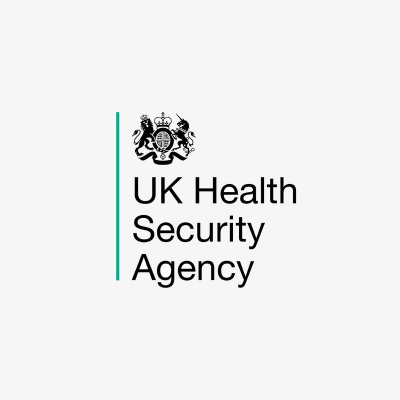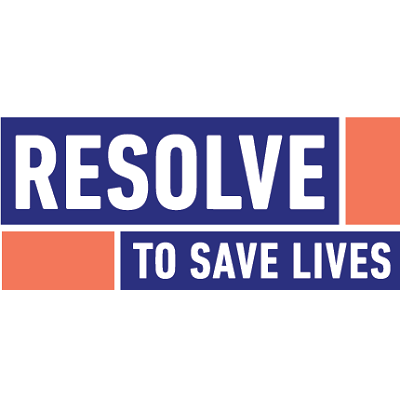WHO counts on the support of over 800 collaborating centres to do its mandated work and implement its programmes. To find out what these WHO collaborating centres are and their area of work with WHO please visit the database. You can also learn more about the WHO collaborating centres here.
Neighbouring Countries


05 - 06 November 2025
07 - 10 November 2017
14 - 16 November 2023
01 - 30 August 2016
30 - 01 October 2016
19 - 23 October 2020
Ground Crossing
Port
Airport
Completed
2023
AMR Self Assessment
No Data!
MPC
Multisectoral Preparedness Coordination
Universal Health Coverage
Sustainable Development Goals
SDG Target 3.b
SDG Target 3.c
SDG Target 6.2
Others
Conducted
2017
NAPHS
No Plan or Plan not publicly available
Influenza Plan
D - National AMR action plan approved by government that reflects Global Action Plan objectives, with a budgeted operational plan and monitoring arrangements.
AMR PLAN
Public Health Emergencies Preparedness
-
 Austrian Development Agency (ADA)
Austrian Development Agency (ADA) -
 PIP Framework
PIP Framework -
 UK Health Security Agency (UKHSA)
UK Health Security Agency (UKHSA) -
 Resolve to Save Lives
Resolve to Save Lives
-
Sierra Leone (SL) reported the first case of the Ebola Virus Disease (EVD) in May 2014 and by mid August, 848 infections and 365 deaths had been registered in Sierra Leone. The disease has a fatality rate of up to 90% and no licensed treatment appropriate for infected humans is available. According to Sierra Leone's National Taks Force for EVD, the lack of:
- culturally appropriate community awareness raising about EVD identification and protection, tied to ignorance and
misinformation among the population;
- effective surveillance and reporting of EVD infected people by the communities and
- sufficient Personal Protective Equipment (PPE) and disinfectant (chlorine)
are causing serious risks for a continued spread of EVD.
This projects thus seeks to contribute to the prevention and containment of EVD in Sierra Leone in three districts (Bo and Pujehun in the south and Kono in the east), by aiming to achieve the following results:
1) 50 nurses are being trained in how to prevent, identify and treat Ebola and in how to properly use PPE and chlorine.
2) 50 community health workers, 100 faith leadears and 2500 key community stakeholders (such as traditional
leaders, village chiefs, teachers or women group leaders) who are respected by their communities and therefore
have an enormous outreach and impact on people's opinion and behaviour , are properly trained in delivering
sensitzation messages on EVD prevention and identification and in conducting community surveillance and
tracing for about 6.000 people in the 3 districts.
3) Ebola treatment and/or isolation centers in the 3 districts are equipped with PPEs and chlorine
in order to reach about 6.000 people living in rural communities within the targeted districts, who have so far not been reached by any active organisation involved in the EVD response. -
Sierra Leone reported the first case of Ebola Virus Disease (EVD) on May 25th and until the end of October 2014, 3,896 infections and 1,281 deaths had been registered. EVD has a fatality rate of up to 90% and no licensed treatment appropriate for infected humans is available. According to Sierra Leone's National Taks Force for EVD the lack of, amongst other:
a) culturally appropriate community awareness about EVD identification and protection,
b) effective surveillance and reporting of EVD-infected people by the communities,
c) sufficient Personal Protective Equipment (PPE) and disinfectant (chlorine) as well as
d) safe and culturally appropriate burial practices
are causing serious risks for a continued spread of EVD.
This projects builds upon the ADA funded project "To Fight Ebola Epidemic in Sierra Leone" and seeks to contribute to the prevention and containment of EVD in Sierra Leone in 6 districts (Bo,Bonthe, Pujehun, Moyamba, Kono, Tonkolili), by aiming to achieve the following results:
1) 180 community health workers, 180 faith leaders and 2500 community stakeholders (such as traditional leaders, village chiefs, teachers or women group leaders) who are respected by their communities and thus have an enourmour outreach and impact on people's opinion and behaviour, are properly trained in delivering EVD sensitization messages on how to prevent and identify EVD and in conducting community surveillance for about 14.150 people in the 6 targeted districts.
2) 180 Nurses are trained to prevent, identify and treat EVD and apply PPEs and chlorine properly.
3) Ebola treatment and/or isolation centers are equipped with 150 PPEs and 20kg chlorine.
4) Dead EVD victims are properly buried by 24 trained burial teams.
5) EVD affected and stigmatized people receive psycho-social support.
The intervention thus aims to reach a total of 17.430 people (3.280 who are being trained and 14.150 members of the community) . -
To establish and strengthen influenza surveillance systems, knowledge and capacities for a timely and appropriate response to pandemic influenza
-
To support Africa Centres for Disease Control and Prevention (Africa CDC) with the COVID-19 pathogenic genomic sequencing initiative
-
Support Africa Centres for Disease Control and Prevention (Africa CDC) with the distribution of COVID-19 vaccines across the continent
-
To support the UK's New Variant Assessment Platform (NVAP) rollout to African Union Member States, to enhance the detection and subsequent assessment of SARS-CoV-2 variants
-
Support Africa Centres for Disease Control and Prevention (Africa CDC) to undertake a rapid mortality survey to assess the impacts from COVID-19
-
Support Africa Centres for Disease Control and Prevention (Africa CDC) and partners response to Covid-19
-
Support Africa Centres for Disease Control and Prevention (Africa CDC) to develop and strengthen the Africa CDC Kofi Annan Global Health Leadership Programme
-
Support Africa Centres for Disease Control and Prevention (Africa CDC) with the organisation and delivery of the Africa CDC virtual conference 'Africa's Leadership in COVID-19 Vaccine Development and Access'
-
Support Africa Centres for Disease Control and Prevention (Africa CDC) to develop monitoring and evaluation of the Partnership to Accelerate COVID-19 Testing: Trace, Test and Track initiative
-
Support Africa Centres for Disease Control and Prevention (Africa CDC) and partners to develop guidance for sero-surveillance surveys
-
Support Africa Centres for Disease Control and Prevention (Africa CDC) and partners to develop and strengthen the African Volunteer Health Corps (AVoHC) for effective public health deployment for COVID-19 response
-
To support Africa Centres for Disease Control and Prevention (Africa CDC) with the development and implementation of COVID-19 guidance
-
"To support Africa Centres for Disease Control and Prevention (Africa CDC) in strengthening the Public Health Emergency Operation Centres (PH EOC) for effective COVID-19 response across the African Union member states. "
-
Support Sierra Leone Ministry of Health and Sanitation (MoHS) emergency preparedness for COVID-19
-
Support Sierra Leone Ministry of Health and Sanitation (MoHS) emergency preparedness for COVID-19
-
Support the Sierra Leone Ministry of Health and Sanitation (MoHS) respond to COVID-19
-
Support Sierra Leone Ministry of Health and Sanitation (MoHS) emergency preparedness for COVID-19
-
To provide 70 cities with technical and financial assistance to respond to COVID-19
-
"Integrated training of healthcare workers; Infection Prevention and Control monitoring and supportive supervision"
-
To provide fast, flexible funds to help mobilize response teams and procure necessary supplies.
- National Legislation, Policy and Financing
- IHR Coordination, Communication and Advocacy
- Food Safety
- Antimicrobial Resistance
- Biosafety and Biosecurity
- Real-Time Surveillance
- Workforce Development
- Preparedness
- Emergency Response Operations
- Linking Public Health and Security Authorities
- Medical Countermeasures
- Chemical Events
- National Institute of Infectious Diseases (NIID)
- AFENET
- Africa Centres for Disease Control and Prevention (Africa CDC)
- African Society for Laboratory Medicine (ASLM)
- Argentina, National Food Safety and Quality Service (SENASA)
- Asia-Europe Foundation (ASEF)
- Asian Development Bank (ADB)
- Asian Infrastructure Investment Bank (AIIB)
- Australia
- Australia, Department of Foreign Affairs and Trade (DFAT)
- Austrian Development Agency (ADA)
- BDC
- Better Health Moves Humanity Forward (PATH)
- Bill & Melinda Gates Foundation (BMGF)
- Brazil, Ministry of Agriculture, Livestock, and Supply (MAPA)
- Coalition for Epidemics Preparedness Innovations (CEPI)
- Danish International Development Agency (DANIDA)
- Deutsche Gesellschaft für Internationale Zusammenarbeit (GIZ)
- Ending Pandemics
- EpiAFRIC
- EPPR
- European Union
- FAO Emergency Centre for Transboundary Animal Diseases (ECTAD)
- Fleming Fund
- French Embassy
- Fundación Maris Llorens
- Global Affairs Canada (GAC)
- International Association of National Public Health Institutes (IANPHI)
- International Federation of Biosafety Associations (IFBA)
- International Federation of Red Cross and Red Crescent Societies (IFRC)
- International Regional Organization for Agricultural Health (OIRSA)
- Japan International Cooperation Agency (JICA)
- Japan International Cooperation System (JICS)
- Mekong Basin Disease Surveillance (MBDS)
- National Center for Global Health and Medicine (NCGM)
- Norwegian Institute of Public Health (NIPH)
- OPEC Fund for International Development (OFID)
- PIP Framework
- Resolve to Save Lives
- Swiss Agency for Development and Cooperation (SDC)
- The Service for the National Health for Food Safety and Food Quality (SENASICA)
- U.K, Department for International Development (DFID)
- U.N. Food & Agriculture Organization (FAO)
- U.S. Agency for International Development (USAID)
- U.S. Defense Threat Reduction Agency (DTRA)
- U.S. Department of Agriculture (USDA)
- U.S. Department of Defense (DoD)
- U.S. Department of Justice (DoJ)
- U.S. Department of State (DoS)
- U.S. Federal Bureau of Investigation (FBI)
- U.S. National Institutes of Health (NIH)
- UK Health Security Agency (UKHSA)
- United Nations Children's Fund (UNICEF)
- United States Centers for Disease Control and Prevention (U.S. CDC)
- World Bank
- World Health Organization (WHO)
- World Organisation for Animal Health (WOAH)